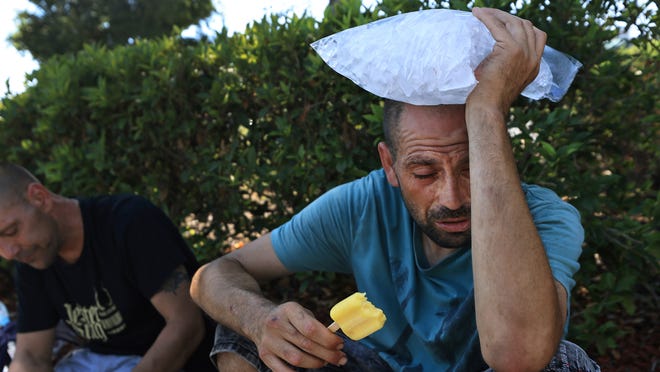Much of California remained under excessive-heat warnings Thursday, and residents of the Golden State have again been asked to limit electricity usage amid an unusual September heat wave.
The National Weather Service said temperatures in California, particularly over interior valley regions, were expected to stretch “well into the triple digits” through Friday. Temperatures are expected to cool this weekend, with Hurricane Kay making its way toward the southern part of the state.
Another flex alert, this time from 3 to 10 p.m., was issued by the California Independent System Operator in an effort to avoid rolling blackouts.
California’s electric grid operator issued Level 2 energy emergency alerts across the state at 3 p.m. Thursday, urging residents to reduce energy use from 4 p.m. to 9 p.m.
Flex alerts are issued by CAISO when extreme heat causes electricity usage to increase, straining the state’s power supply, according to the operator’s website. The alerts are issued during the evening hours because that’s when people come home and turn on air conditioning, lights and appliances, the website adds.
Californians were able to avoid rolling power outages Tuesday and Wednesday during flex alerts.
Hurricane Kay to bring rain in California
Hurricane Kay, which developed off western Mexico, is part of what will bring some relief to Southern California as it heads north.
As the hurricane continues northwest, it’s expected to dump rain on parts of the state starting Friday, according to the National Weather Service.
Some areas could get up to 6 inches of rain, potentially leading to flash flooding, the NWS said Thursday.
‘MASS CASUALTY EVENTS’:Heat waves are the deadliest natural disasters we face. Here’s what makes them so dangerous
Swamped in heat
New heat records were set this week in many California cities — including San Jose (109 degrees), Napa (114), Santa Rosa (115), King City (116) and Merced (116), AccuWeather reported.
On Wednesday, Sacramento broke a record and reached 42 days of 100-degree weather, according to the National Weather Service.
“This is the most in a year on record. Needless to say, we’ll add a few more to that record before we’re done,” the NWS tweeted.
Heat waves like the one California has been experiencing are the most deadly natural disasters the U.S. faces each year, killing more people than hurricanes, tornadoes, floods, blizzards or extreme cold, according to the National Oceanic and Atmospheric Administration.
WILDFIRES:California wildfires kill 4 over Labor Day weekend amid record-breaking temperatures
RECORD-SMASHING TEMPS:California avoids rolling blackouts amid record-breaking heat wave; State issues another ‘flex alert’
Avoiding rolling blackouts
Californians have been asked to cut back on electricity at home and at businesses between 3 p.m. and 10 p.m. by not using air conditioning and other appliances as they normally would.
California Gov. Gavin Newsom, speaking Wednesday in Beverly Hills, said he spent days debating whether to send an alert this week to 27 million cellphones urging residents to turn off or reduce nonessential power. He ultimately decided to test it Tuesday and concluded it was a game-changer, though he’s reluctant to use it too often because he fears weakening its effectiveness.
The emergency alert was not repeated Wednesday.
Contributing: Christine Fernando, Celina Tebor and Elizabeth Weise, USA TODAY; Erin Rode, The Desert Sun (Palm Springs, California); The Associated Press.


